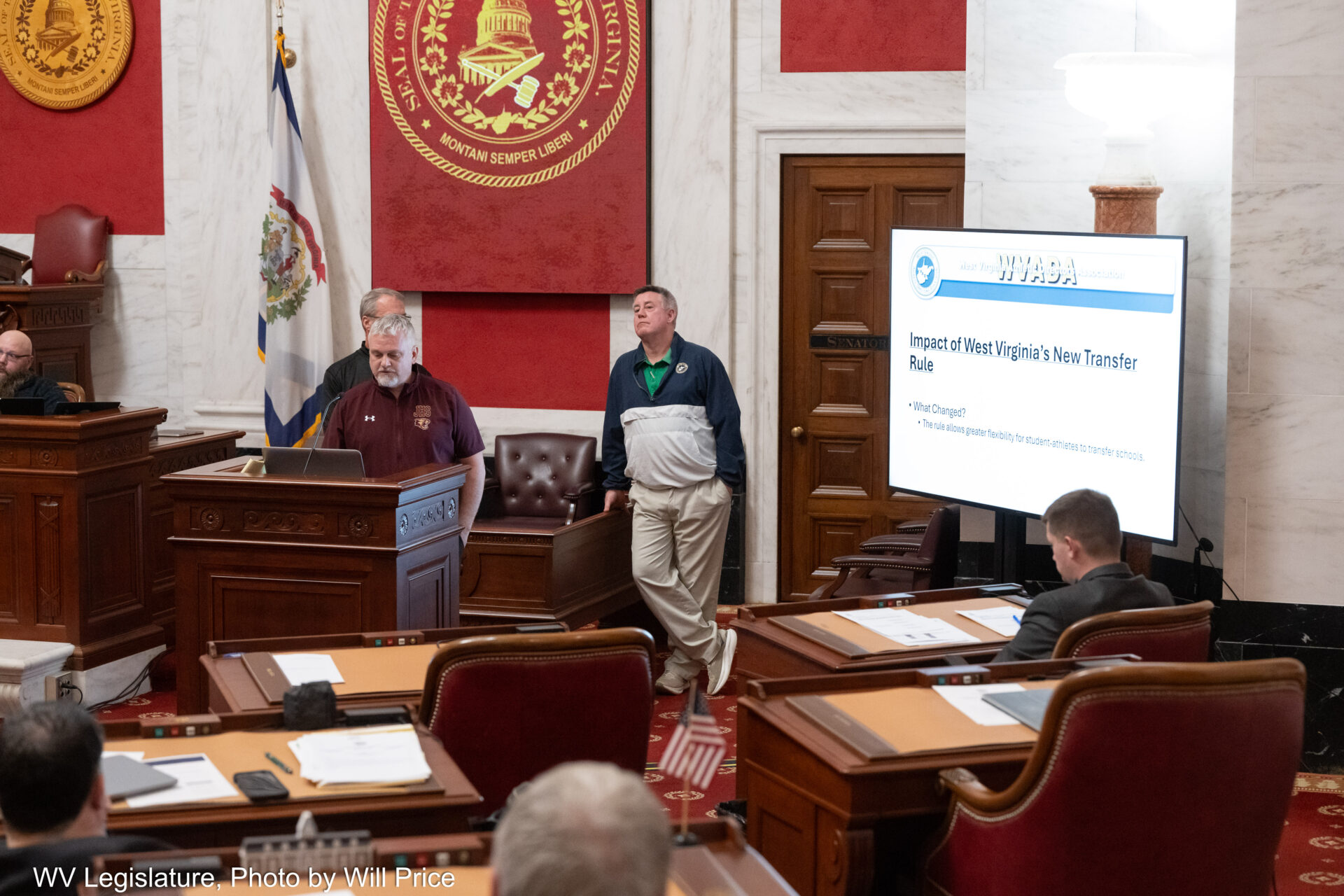High school sports have been up in the air for the last two years as high school athletes have been able to transfer from one school to play for another. School athletic directors are asking for a change.
David Viands, president of the West Virginia athletic director’s association, told members of the Joint Standing Committee on Education Tuesday evening that student athletic transfers have exploded over the past two years.
“We went from one time transfer before the ninth grade year with a possible transfer back to the home school, to now, where student athletes can transfer at any time,” he said. “What we’re seeing as a result of that is a very large increase in transfers statewide. 2023 432 statewide transfers for Fall sports, 2024 was 433.”
Viands said transfer data is not available for 2022 or prior because the state did not have a reason to track the small number of transfers statewide.
In 2023, the passage of House Bill 2820 allowed student athletes to transfer after their freshman year of high school and maintain eligibility to play. Gov. Jim Justice did not sign the bill, and instead allowed it to become effective 90 days from passage.
Viands said many of the transfers are now upperclassmen.
“When students are allowed to transfer in or out, they’re displacing student athletes that are in that community and have been in that community for a long time,” he said. “Increased transfers have led to competitive imbalances, disparate between teams based on age and experience.”
Viands asked lawmakers to consider legislation that allows athletic directors, principals and other stakeholders to work together to create a more equitable rule.
“We really like (House) Bill 5011 from last year,” he said. “There’s probably some wiggle room within that. If people don’t like that and they want a little bit more freedom, I think one thing that we really, really need to get away from are high numbers of junior and senior transfers that really puts an imbalance into competitive balance. It throws it all out of whack.”
Del. Wayne Clark, R – Jefferson, said he has two 4A high schools in his small district and has seen the issues with the new transfer rule firsthand.
“All the kids live and play youth sports all together, and we are seeing kids moving with the program, and as the program is moving, one school is getting better at this sport than others,” he said. “We are seeing exactly what we thought we were going to see with this transfer portal in place, and I strongly suggest that we look at that this session.”
Not all lawmakers were on board with changing the current rule, however. Del. Jimmy Willis,R – Brooke, questioned the impulse to curtail students’ freedom.
“Why should we as a legislature tell a kid not to go to a school that might give him or her a better opportunity, or might just fit what they’re trying to do?” he said.
Legislators will convene for a delayed session Feb. 12 following the inauguration Jan. 13.
